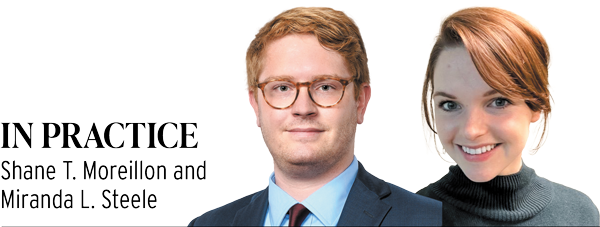Subscriber Benefit
As a subscriber you can listen to articles at work, in the car, or while you work out. Subscribe Now For most, the purpose of setting up an estate plan is to ensure that wealth and property are passed from one generation to the next. Part of that plan should include how a client’s intellectual property and associated intangible assets, including patents, copyrights and trademarks, are to be inherited, valued and managed after death.
For most, the purpose of setting up an estate plan is to ensure that wealth and property are passed from one generation to the next. Part of that plan should include how a client’s intellectual property and associated intangible assets, including patents, copyrights and trademarks, are to be inherited, valued and managed after death.
Generally speaking, estate planning seeks to provide for family members, protect assets, avoid probate, minimize tax consequences and reduce legal headaches for heirs or beneficiaries. The same is typically true for intellectual property estate planning, but with a couple of pitfalls.
Patents
The law protects both inventions in the traditional sense, called utility patents, and design patents that cover new, ornamental designs. Both utility and design patents are transferrable during life and can be devised upon death. Depending on the value of the patent, a trust may provide the most control over the asset during your client’s life, while also providing the typically desirable features of a trust, including the avoidance of probate. Currently pending patent applications can also be transferred in a similar manner.
Keep in mind that the payment of patent maintenance fees and the proper prosecution of any pending patent applications does not stop upon the death of an inventor or by reason of an inter-vivos transfer. If a client chooses the trust option, they may consider adding supplemental sources of liquidity to the trust to provide for maintenance of the asset during and after the life of the inventor. You may also consider adding a provision directing that the trustee ensure the patent(s) and/or application(s) do not “abandon,” and even including specific directives as to the steps required.
In the case of the rights to a patent application that is being prosecuted at the time of the transfer, the applicant will need to be amended to reflect the transfer to any heir, beneficiary, estate or trust. The name of the applicant can be changed by submitting a copy of the relevant document to the USPTO. For this reason, a trust is also preferred, as probate of the estate may slow down any transfer of the asset, thereby preventing the payment of maintenance fees or prosecution of any applications. Additionally, the estate documents should clearly identify the patent(s)/application(s) by serial number or application number to properly identify the specific assets being transferred.
Copyrights
Copyrights protect works of authorship fixed in a tangible medium. Ownership of a copyright provides for rights in the work, such as rights to publication or to public display. Unlike patents, copyrights may involve both tangible property (the original work) and intangible property (the copyright). Estate plans should appropriately address both aspects of the work (who receives the original painting and who owns the copyright). Failure to separately identify the copyright may cause the copyright to pass via a residuary clause or intestacy statute.
The statutory heirs of an author automatically inherit the author’s “right of termination” as to transfers made during the author’s life but excludes specifically transfers made by will. The original purpose of this provision was to prevent exploitative transfers of a copyright during the author’s life. For this reason, wills are the most secure way for an author to transfer copyright ownership because, in some cases, this provision may be used as a justification to revoke transfers to a trust by the author.
Upon the death of an author, a client may consider filing a copy of the author’s death certificate with the Copyright Office. Because a work is protectable beyond an author’s life, this would notify the Copyright Office to extend the life of the copyright.
Trademarks
A trademark protects a source-identifier for goods or services used in commerce. Typically, this includes words, logos, slogans or combinations of these elements. Usually, trademarks are owned by a business entity. In the event the trademark is owned by the individual, it should be accounted for in the estate plan. After the death of a trademark owner, the trustee and/or executor should be directed to file documentation with the USPTO to ensure that necessary declarations and fees are filed to keep the trademark active.
Similar to patents, a trust is likely the better testamentary vehicle to transfer trademark ownership. A trust will avoid probate and allow for a quicker and more seamless transfer of the asset. A trademark is required to continuously be used in commerce, and any period of unuse may jeopardize the mark. If transferred to a trust, the trademark owner will have the ability to provide for the licensing and management of the mark during and after death through provisions of the trust.
Miscellaneous
Intangibles may represent a large majority of an individual’s estate. Much like paying property taxes on real estate inherited from a decedent, recipients of intangible assets may also be subjected to significant tax burdens. Further, many intellectual property assets can be expensive to maintain due to expenses such as annuity payments for enforcement and any corresponding attorney fees.
Estate planners and their clients should carefully craft their estate plans to ease these burdens by providing supplemental sources of liquidity, if possible, and clear instructions to those designated to manage the assets during the owner’s life and beyond.•
__________
Shane T. Moreillon is an associate at Woodard Emhardt Henry Reeves & Wagner LLP in Indianapolis and Miranda L. Steele is a partner at Foley Abbott & Steele LLC in Indianapolis. Opinions expressed are those of the authors.
Please enable JavaScript to view this content.
